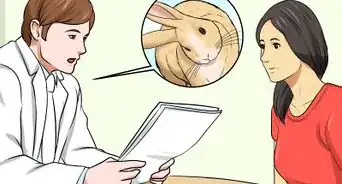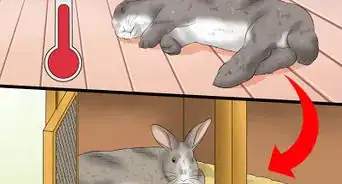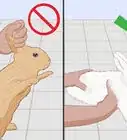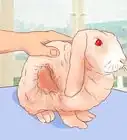This article was co-authored by Pippa Elliott, MRCVS. Dr. Elliott, BVMS, MRCVS is a veterinarian with over 30 years of experience in veterinary surgery and companion animal practice. She graduated from the University of Glasgow in 1987 with a degree in veterinary medicine and surgery. She has worked at the same animal clinic in her hometown for over 20 years.
There are 7 references cited in this article, which can be found at the bottom of the page.
wikiHow marks an article as reader-approved once it receives enough positive feedback. In this case, 84% of readers who voted found the article helpful, earning it our reader-approved status.
This article has been viewed 101,166 times.
Rabbits are adorable pets and generally fairly easy to take care of. They can become sick, however, and it is not always immediately apparent when this is the case. Recognizing common gastrointestinal and respiratory problems can help you determine when yours is sick. Noticing any physical or behavioral changes can also give you clues. If you suspect that your bunny is sick, you’ll want to care for it and have a vet examine it.
Steps
Recognizing Gastrointestinal and Respiratory Symptoms
-
1Take notice when your rabbit isn’t eating. Pay attention if your rabbit’s food dish stays full all day long, or if your pet doesn’t eat like s/he usually does. If your rabbit has a sudden loss of appetite, it can indicate a number of possible illnesses.[1]
-
2Make sure your rabbit has regular droppings. Normally, rabbits will produce plenty of even, round droppings. However, if your rabbit has any of the following problems, it may have either a gastrointestinal illness, or an issue that causes this as a symptom:Advertisement
-
3Listen to your bunny’s tummy. You can use an ordinary stethoscope (available from many pharmacies and home medical supply stores) to check on your rabbit’s digestive system. Simply place the stethoscope on your pet’s belly and have a listen. If you hear unusual sounds (gurgling, rumbling, etc.), this may indicate that your pet is having gastrointestinal problems, especially when combined with other symptoms such as decreased appetite or diarrhea.[6]
- Carefully pick up your bunny by cradling him/her in your arm and holding him/her close to you. Never pick a rabbit up by the paws, scruff, or ears. Even if the rabbit kicks or squirms, keep him/her gently but firmly snuggled next to you so that s/he does not fall.
- Sit down and set your bunny in your lap. Pet him/her and talk to him/her in a soothing voice to calm it down.
- Gently place the stethoscope against your rabbit's side and have a listen.
- When finished, carefully lower your bunny to the ground or his/her home. Never let a rabbit drop to the ground, as this can injure it.
-
4Learn the signs of snuffles. Rabbits are susceptible to a common illness called snuffles. Ordinarily, this is accompanied by runny eyes and a runny nose as well as sneezing. If you see any of these symptoms (or all of them at once), you will want to have your bunny inspected by a vet.[7]
- Unlike human colds that are caused by a virus, rabbit colds are caused by bacteria. Therefore, they can be treated with antibiotics prescribed by a vet.[8]
-
5Listen to your bunny’s breathing. Rabbits are obligatory nose breathers, meaning they won’t breathe through their mouths. Normally, you shouldn’t hear or see any labored breathing. If your rabbit seems to be breathing loudly, or moving its chest significantly when breathing, this may be a sign of a respiratory problem or other issue.[9]
-
6Notice when your rabbit sneezes. Occasionally, a rabbit may get some dust in its nose and need to sneeze. If you notice chronic (frequent) sneezing, however, your rabbit may be sick.[10]
Watching for Physical Changes
-
1Feel your rabbit’s ears. Rabbits are able to regulate their temperature by radiating heat through their ears. If you notice that your bunny’s ears are unusually hot or cold, it can indicate that it is sick.[11]
-
2Take your rabbit’s temperature. If you suspect that your bunny’s temperature is unusually high or low, you can take its temperature to be sure. This can help you or a vet make a diagnosis.[12]
- Use a plastic rectal thermometer to check your pet’s temperature. If you are uncomfortable with this, or unsure of how to do it, take your rabbit to a vet for help.
- A rabbit’s normal body temperature ranges between 101 F - 103 F (38.3 C - 39.4 C).
-
3Inspect your rabbit’s eyes. If you see tears or a discharge coming from your rabbit’s eyes, this could indicate a variety of illnesses. Aside from respiratory issues, dental problems could be the culprit. The roots of some rabbits’ teeth are close to their tear ducts. Dental problems may put pressure on these parts, which will then cause the tearing.[13]
-
4Watch out for changes in weight. Once your rabbit is fully-grown, it will ordinarily maintain a fairly consistent weight. If you notice that your pet has gained or lost significant weight, especially if this happens suddenly, this may indicate that it is sick.[14]
-
5Check your rabbit’s skin and fur. You will be familiar with the color and texture of your bunny’s fur and skin. If you notice that your pet is losing clumps of hair, or that its skin has become reddened, this may indicate an issue such as ringworm.[15]
- Some conditions can cause a rabbit to have incontinence. Urine-soaked hindquarters are a clear sign of this problem. Contact a vet right away if you notice this issue.
-
6Inspect your bunny’s genitalia. Rabbits can suffer from a virus known as myxomatosis. This is spread by biting insects such as mosquitos, and can cause redness and swelling of the genitalia, as well as runny eyes and nose.[16]
- Sit down with your bunny in your lap. Pet it and talk to it soothingly for a few minutes to calm it down.[17]
- When the bunny is calm, very carefully roll it over, using your non-dominant hand to support its back. Place it so that its head is curled against your abdomen, and its hind feet are sticking out away from you.
- Whether male or female, your rabbit's genitals will be a fuzzy protuberance between its hind legs. Normally, they will be hidden by fuzz and not completely visible. If you see any obvious or abnormal swelling or redness, however, this may indicate myxomatosis or another problem.
- You can also gently press on your bunny's abdomen above the genital area. This will make the genitals more visible and easier to inspect.
- Your bunny may not like to be inspected in this way. To avoid accidentally harming it, always be sensitive and keep in mind any injuries or disabilities it may have.
Paying Attention to Behavioral Changes
-
1Watch out for any changes in attitude. Rabbits can develop their own personalities, and can display a wide range of normal behaviors. If you notice a sudden change in behavior, however, this may indicate an illness or other health problem. For instance, if sick, a normally playful bunny may not want to be bothered, or an aloof bunny may suddenly become clingy.[18]
- Regardless of your bunny’s normal behavior patterns, sudden lethargy can be a clear sign that it is sick.
-
2Pay attention if your bunny drools. Rabbits are susceptible to a variety of dental problems, such as malocclusion (misalignment) and abscesses. If you notice your pet drooling, this may be happening because they cannot close their mouth or are in pain due to one of these dental problems.[19]
-
3Observe how your bunny moves. If your rabbit has started to hop unusually, this can indicate a variety of illnesses. For instance, if your pet seems to have lost its balance or moves with its head tilted to one side (a condition called wry neck), this may actually be due to a bacterial infection of the ears. Similarly, if your bunny seems to lean to one side when hopping, this may indicate sore hocks.[20] [21]
-
4Listen for teeth grinding. When happy, many rabbits make a kind of purring sound by grinding their teeth. If your bunny is noisily grinding its teeth together, however, this can indicate that it is in pain.[22]
- You may notice your rabbit making a happy grinding noise when you are petting it, feeding it treats, or calming it down. Pay attention to this behavior, so that you can know what to expect from your bunny.
- Grinding as a reaction to pain will be much louder than the "happy" version. You may also notice that the louder grinding is accompanied by other signs of discomfort, such as squirming or kicking.
-
5Pay attention if your rabbit shakes. A particular virus known as the calicivirus can cause a variety of symptoms, including loss of appetite, lethargy, and breathing difficulties. It can also cause your bunny to shake, however, which may be a more obvious sign.[23]
-
6Notice if your bunny is scratching or itching excessively. Like dogs, cats, and other pets, rabbits are susceptible to fleas, mites, and other pests. These parasites can cause scratching, itching, and general irritation.[24]
- If your rabbit has fleas, you may also notice dark, dry dust on your pet’s fur or skin. Known as “flea dirt,” this is dried blood that is a waste product of fleas.
- Do not give your rabbit dog or cat flea medication. It can make your pet very sick, and may even be fatal. Talk to your vet about safe ways of eliminating parasites from your rabbit.
References
- ↑ http://www.rspcavic.org/health-and-behaviour/rabbits/
- ↑ http://www.rabbit.org/care/sick.html
- ↑ http://www.rabbit.org/care/sick.html
- ↑ http://www.rspcavic.org/health-and-behaviour/rabbits/
- ↑ http://anrcatalog.ucanr.edu/pdf/8377.pdf
- ↑ http://www.bio.miami.edu/hare/sickbun.html
- ↑ http://www.bio.miami.edu/hare/sneezing.html
- ↑ http://anrcatalog.ucanr.edu/pdf/8377.pdf
- ↑ http://www.rspcavic.org/health-and-behaviour/rabbits/
- ↑ http://www.rabbit.org/care/sick.html
- ↑ http://www.rabbit.org/care/sick.html
- ↑ http://www.bio.miami.edu/hare/sickbun.html
- ↑ http://www.bio.miami.edu/hare/sneezing.html
- ↑ http://www.rspcavic.org/health-and-behaviour/rabbits/
- ↑ http://anrcatalog.ucanr.edu/pdf/8377.pdf
- ↑ http://www.rspcavic.org/health-and-behaviour/rabbits/
- ↑ http://www.bio.miami.edu/hare/sexing.html
- ↑ http://www.rabbit.org/care/sick.html
- ↑ http://www.rabbit.org/care/sick.html
- ↑ http://anrcatalog.ucanr.edu/pdf/8377.pdf
- ↑ http://www.sandiegorabbits.org/health/your-rabbit-sick
- ↑ http://www.rabbit.org/care/sick.html
- ↑ http://www.rspcavic.org/health-and-behaviour/rabbits/
- ↑ http://www.sandiegorabbits.org/health/your-rabbit-sick
About This Article
To determine if your rabbit is sick, pay attention to its food dish to make sure it's eating normally. If your rabbit has a sudden loss of appetite, it could be sick. Examining its droppings can also help. If your rabbit has no droppings at all, or if they're irregularly shaped or runny, this can indicate illness. Next, inspect its face for runny eyes and a runny nose, which may indicate a virus called snuffles. Chronic sneezing is another common symptom of snuffles. For tips on examining your bunny's fur and skin for symptoms of illness, read on!
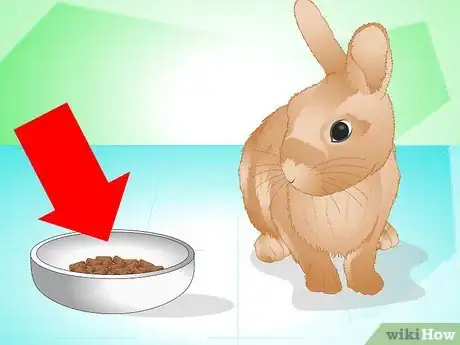
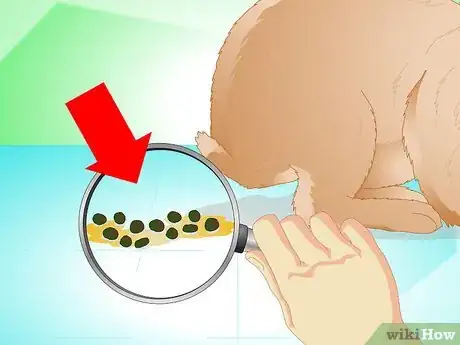
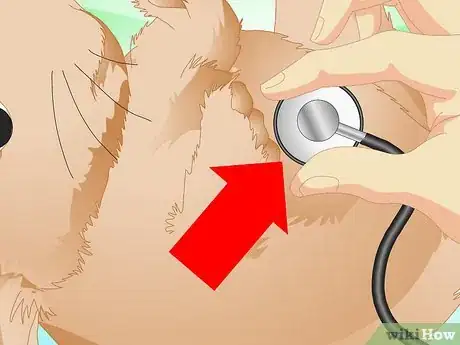
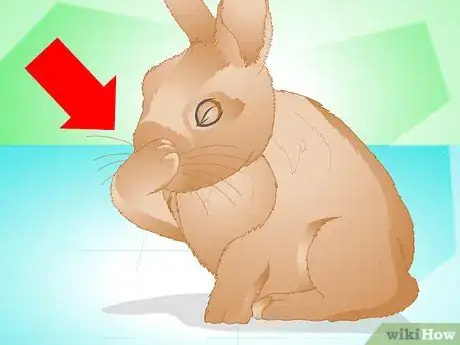
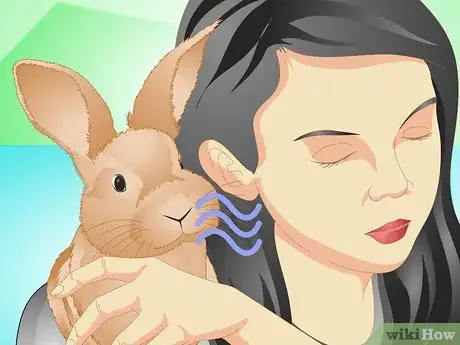
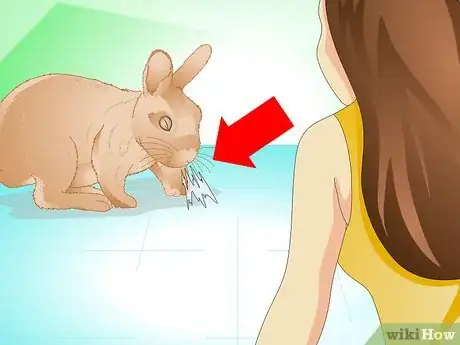
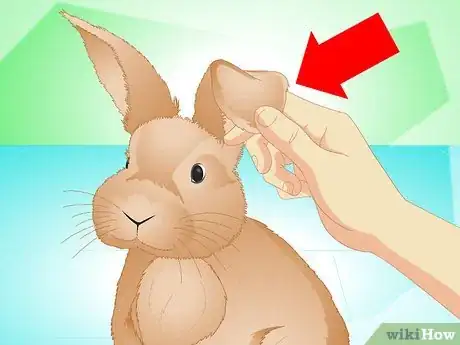
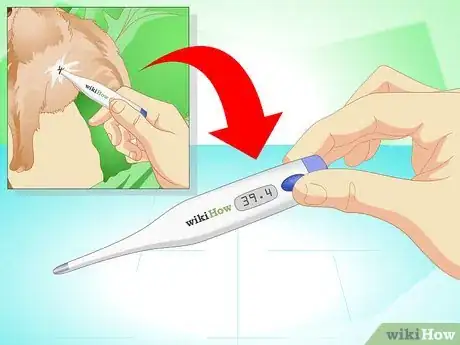
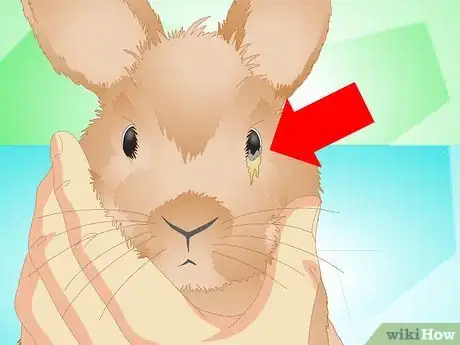
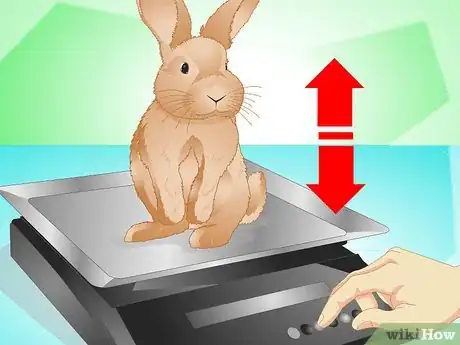
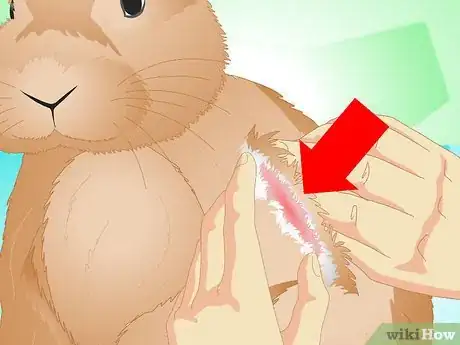
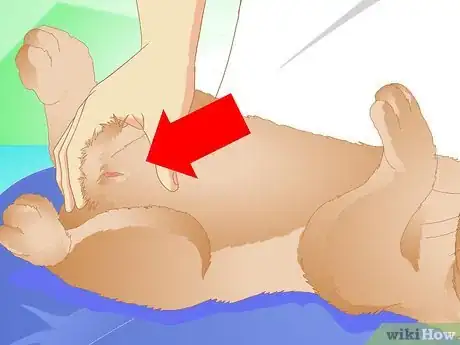
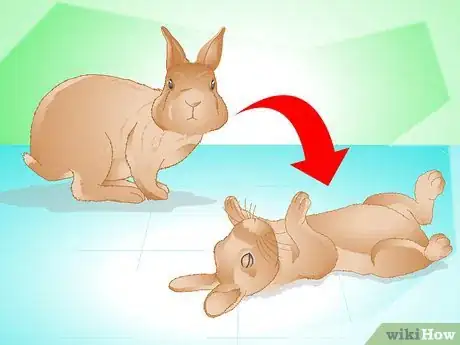
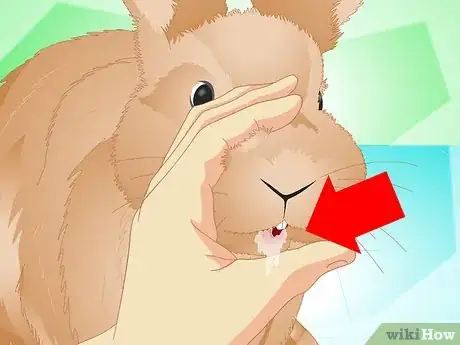
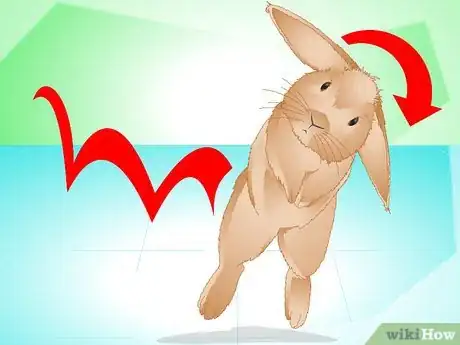
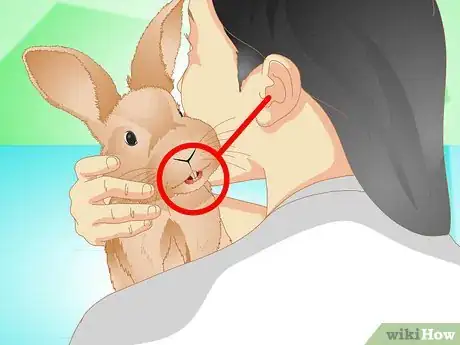

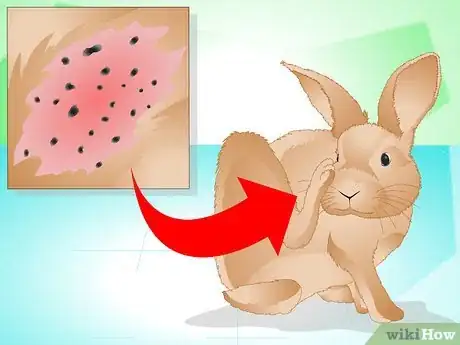
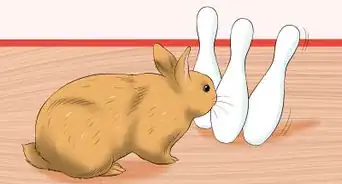
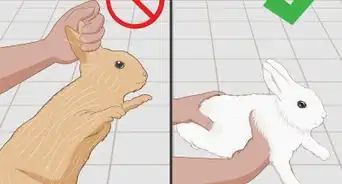
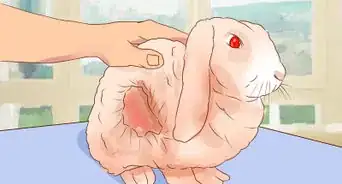
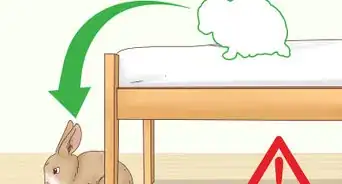
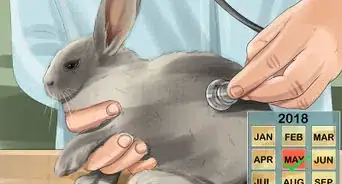

-in-Rabbits-Step-12.webp)

